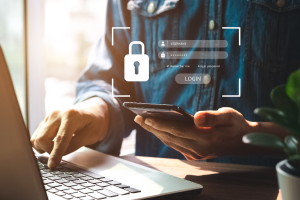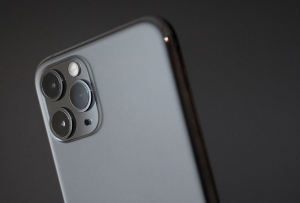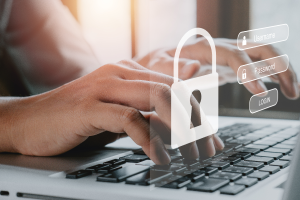For the most part, iPhones are well-protected devices — but they aren’t immune to malware attacks. These attacks range from viruses and ransomware to phishing, spyware, and Trojans.
While there have been a number of attacks and scams directed at iOS devices (iPhones and iPads) over the years, one of the most prominent was XcodeGhost, which infected more than 2,500 apps on the Apple App Store and was downloaded by 128 million users.
While this article will cover signs of malware infection and how to remove malware from your iPhone, one of the best ways to protect yourself is to set up a virtual private network (VPN) that encrypts internet traffic and provides much more security for your data than an open network.
McAfee® Safe Connect is one powerful, proven VPN solution for iPhones. It features bank-grade Wi-Fi encryption so you can use the internet with confidence.
7 signs your iPhone has a virus
If you receive a demand for a cryptocurrency ransom and you’ve lost control of your phone, it’s safe to say that you’ve been hacked (this scenario is highly unlikely but is remotely possible with iOS devices.) In other cases, the signs of a malware attack or iPhone virus might be more subtle. Some signs include:
- Your iPhone works much more slowly than before — its functionality is diminished — and seems to be using a lot more power, draining your battery quickly.
- The browser redirects or takes you to sites you didn’t intend to visit.
- Apps crash all the time, or there are unfamiliar apps on your phone that you don’t remember installing.
- There’s a sudden increase in data usage or calls made, causing increases in your phone bill.
- There are infection warnings, often accompanied by solicitations to purchase something to fix them.
- You’re having problems shutting down or restarting your device.
- You have an increasing number of pop-up ads in Safari or another web browser.
5 ways to remove malware from your iPhone
If your mobile security has been breached, it’s important to respond quickly to make sure your iPhone is clean and safe. While the following tips can’t remedy how to remove malware from an iPhone in every case, they work often enough that they’re worth trying as your first volley against a malware attack.
Restart your iPhone
Often, problems with your iPhone — especially if they aren’t really a malware attack — can be resolved if you hit the power button and turn off your device and then turn it on again. This is the starting maneuver offered by IT specialists everywhere. Then, try a few apps after you’re up and running again to see if everything is working OK.
Update your system software
Malware often uses holes in older versions of the iOS to do its damage. So, it’s a good idea to keep your iPhone updated with the latest operating system, which often includes new security patches and features. For the same reason, you should keep your phone’s apps up to date. To update iOS, follow these steps:
- Open your Settings app
- Tap General
- Tap Software Update
- Follow the instructions to update to the latest iOS
Clear your website data and browsing history
Malware can often live in browsing data, especially if you’ve visited an infected site. So, here’s what you’ll want to do to clear your website data and browsing history if your browser is Safari (although the process is pretty similar with Google Chrome):
- Open Settings
- Select Safari
- Select Clear History and Website Data
- Tap Clear History and Data
Restore a previous backup of your iPhone
If you store backups of your device to iCloud, you can restore your iPhone to a previous version that, hopefully, isn’t infected. It’s best to go back to a version that predates any problems you have now.
To do this:
- Go to Settings and select General
- Scroll to the bottom and select Transfer or Reset iPhone
- Choose Erase All Content and Settings
- Either select Erase Now or Backup Then Erase
- When the Apps & Data screen appears, select Restore from iCloud Backup
- Sign in to iCloud and select the backup you’d like to use
Reset your device
A factory reset is kind of a scorched-Earth, last-resort option that returns your phone to pristine, like-new settings. Be aware, though, that this will delete all the content, added apps, and special settings and configurations you have accumulated for your smartphone since buying it.
To reset your factory settings, it’s like the sequence above, except you don’t select a previous version of iPhone to backup — you treat the phone as if it were a new purchase:
- Go to Settings and select General
- Scroll to the bottom and select Transfer or Reset iPhone
- Choose Erase All Content and Settings
- Select Erase Now
Is it possible to protect your device from malware?
It’s far easier on your phone (and your peace of mind) if you can protect your iPhone from getting infected with different types of malware in the first place. It’s possible to protect your device from malware, and it starts by having the right antivirus software. Some other tips include:
- Turn on automatic iOS updates to narrow the window hackers can use to exploit vulnerabilities in your security setup. You should also select automatic app updates for the same reason and uninstall apps you don’t use or recognize.
- Don’t open unexpected or unrecognized attachments, whether they arrive by email, text message, or a messaging app on your phone. If you click on the attachment link, malicious code could be set into motion.
- Don’t “jailbreak” your phone. That is, don’t remove the limitations that Apple and its carriers have imposed on your iPhone so you can obtain full access to the root of the operating system and access all of the phone’s features. Doing so can open new security holes to hackers or undermine existing ones.
- Don’t install apps sourced outside the App Store. One reason iPhones are jailbroken is so people can download apps from outside Apple’s App Store. Unless you really know what you’re doing, though, this can be a very bad idea. While not perfect, Apple maintains very high security standards in their store, which might not be the case with downloads elsewhere.
Personalized protection for your digital life
Keeping your iPhone safe from malware is equal parts common sense, taking the proper precautions, and knowing what to do if you do get infected. For instance, did you get an email offer with a link that seems too good to be true? Then it’s most likely too good to be true, so don’t click it!
This is where McAfee comes in. We can help you on all three fronts with McAfee Mobile Security, which works for both iOS and Android devices.
More and more people carry their lives and essential information on their smartphones. A data breach can be more than an embarrassment or inconvenience — it can be a financial loss or loss of personal data.
With McAfee’s award-winning mobile security app, you get access to a reliable tool that can keep your online browsing safe, secure your Wi-Fi connection, and detect and block online threats, including malware.
McAfee provides the right protection so you can surf with confidence, not fear.










